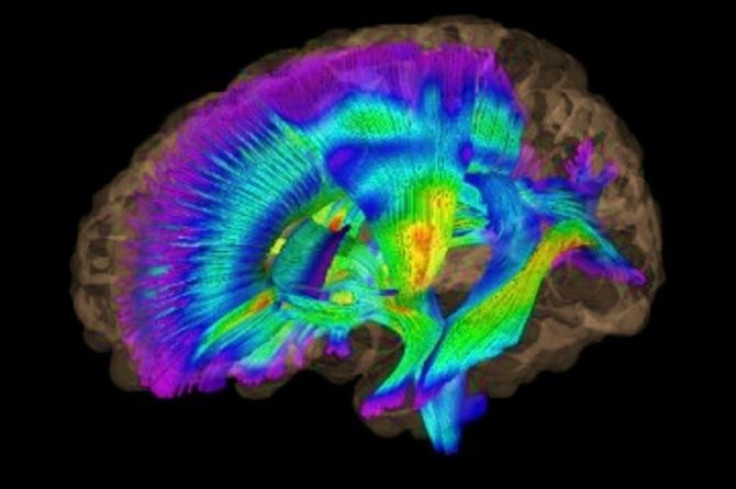Brain Imaging Detects Signs of Autism in Infants as Young as 6 Months

While autism is generally identified after a child’s first birthday, researchers have discovered clear differences in brain development in babies as young as 6 months old who go on to develop autism, months before parents are able to notice symptoms of the disorder.
The study found that children diagnosed with autism spectrum disorder (ASD) had abnormal development of the “white matter” in the brain which is usually particularly filled in nerve fibers that for major information pathways between different regions of the brain.
Researchers examined magnetic resonance imaging brain scans of 92 high-risk babies with an older, autistic sibling at six months, one year and two years of age, using a new technique called diffusion tensor imaging which enabled them to create three-dimensional pictures that showed changes over time in each infant's "white matter".
Investigators found unusual white matter development for 12 of the 15 major brain pathways in the 28 infants who went on to develop autism, compared to the other 64 infants who did not go on to develop the disorder.
Study results indicated that even at six months of age, white matter fiber tracts were different in infants who later developed the brain disorder compared to other children who did not.
Researchers said that a “slowing” in white matter development over time it appeared to be a neurological indication that differs in the brains of children who go on to be classified with autism, and scientists suggested that the finding could potentially lead to earlier detection and treatment of the disorder.
Autism differs greatly in severity and symptoms, and often goes unrecognized, particularly in mildly affected children, and parents don’t generally notice symptoms until the child is 18 months old and clinicians aren’t able to diagnose autism until children start exhibiting the first behavioral and language symptoms of autism at about two years of age.
There is no cure for autism, but investigators said that treatment is best delivered as early as possible to prevent or reduce the onset of disabling symptoms associated with the disorder, and the latest findings offer hope that one day health providers are able to identify infants at risk for autism before behavioral symptoms are present.
"It's too early to tell whether the brain imaging techniques used in the study will be useful in identifying children at risk for ASD in early infancy," Study author Joe Piven of the University of North Carolina's Carolina Institute for Developmental Disabilities in Chapel Hill said in a statement. "But the results could guide the development of better tools for predicting the risk that a child will develop ASD and perhaps measuring whether early intervention therapies improve underlying brain biology."
Autism is a developmental disorder that affects the brain’s proper development of social and communication skills. Although the exact causes of the disorder are unknown, researchers believe that a combination of factors like genes, diet, digestive tract changes, mercury poisoning could all contribute to the likelihood of developing the disorder.
The term autism is used to describe a group of autism spectrum disorders like Asperger syndrome, Rett syndrome and childhood disintegrative disorder characterized by varying degrees of social and behavioral challenges, as well as repetitive behaviors.
Researchers estimated that one in 110 children in the U.S. is on the autism spectrum, a rate that has increased by 600 percent in the last 20 years, which experts said is only partially explained by improved diagnosis.
U.S. Centers for Disease Control and Prevention reported that autism and related disorders could be more prevalent than previously thought, which the health agency said was unclear whether the trend is due to an increasing rate of the illness or an increased ability to diagnose the disorder.
Boys are 3 to 4 times more likely to develop autism and family income, education, and lifestyle, do not seem to affect the risk of autism, according to the National Institutes of Health.
The findings were published on Friday in the American Journal of Psychiatry.



























